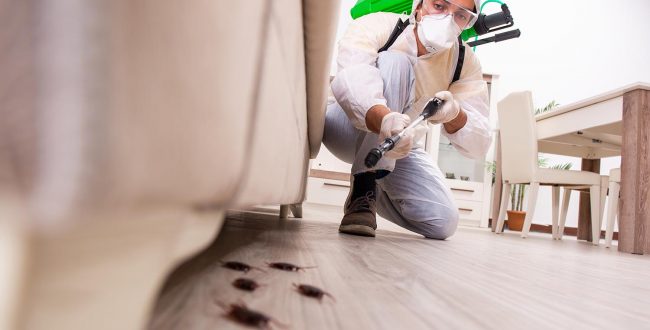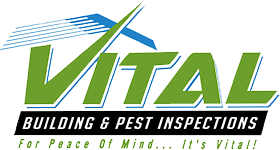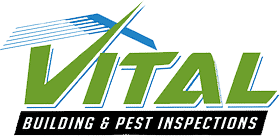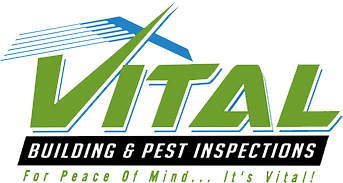Can a pest inspection report be used to identify any safety hazards in a property?

Welcome to our comprehensive guide on pest inspection reports and the role they play in identifying safety hazards in Sydney properties. As a qualified pest inspector at Vital Building Inspections Sydney Sydney, I am here to provide you with valuable information and peace of mind during your real estate journey.
Purchasing or selling a home is likely one of the biggest financial decisions you will make in your lifetime. It is important to have a thorough understanding of the condition of the property, including any potential safety hazards that may impact your health, well-being, and financial investment. This is where a pest inspection report can be a valuable resource.
Pest inspections are an essential part of purchasing or selling a property.Not only do pests, such as termites, pose a threat to the structural integrity of a home, but they can also carry diseases and pose other health risks.Investing in a pest inspection report can help mitigate these potential health risks and protect your investment.
So, can a pest inspection report be used to identify any safety hazards in a property? The answer is yes. A qualified pest inspector is trained to identify and report on a variety of safety hazards that may be present in a property, including structural damage, health risks, and fire hazards. In the following sections, we will delve deeper into these topics and provide you with the knowledge and tools to make informed decisions during your real estate transaction.
Types of Safety Hazards that May be Identified in a Pest Inspection Report
As a qualified pest inspector, it is our job to identify and report on a variety of safety hazards that may be present in a property. Some of the common types of safety hazards that may be identified in a pest inspection report include:
Structural damage caused by pests
One of the primary concerns of a pest inspection is the potential for structural damage to a property. Termites can cause significant damage to the wood structures in a home, leading to costly repairs if left unchecked.
Health hazards
In addition to structural damage, pests can also pose health risks to residents. For example, the presence of mould can cause respiratory issues and allergic reactions. Similarly, lead paint, which was commonly used in older homes, can be harmful if ingested or inhaled.
Fire hazards
Pests can also create fire hazards in a property. For example, birds' nests in chimneys can block the flu and create a fire hazard. Similarly, the accumulation of debris in gutters due to pest infestations can also pose a fire risk.It is important to note that these are just a few examples of the types of safety hazards that may be identified in a pest inspection report. A qualified pest inspector will be able to provide a comprehensive assessment of the property and identify any potential issues that may impact the safety and well-being of the occupants.
The Role of a Qualified Pest Inspector in Identifying Safety Hazards
As a qualified pest inspector at Vital Building Inspections Sydney Sydney, it is my responsibility to identify and report on any potential safety hazards present in a property. This involves a thorough inspection of the property, including both the interior and exterior, as well as the use of specialised tools and techniques to detect the presence of pests and potential safety hazards.
Training and qualifications of a pest inspector
To become a qualified pest inspector, individuals must undergo specialised training and pass exams to earn certifications. Building and Pest Inspector training programs are available, Australia wide.
Inspection process and tools used
During a pest inspection, a qualified pest inspector will use a variety of tools and techniques to assess the property. This may include visual inspections, moisture metres, thermal imaging cameras, and specialised equipment for detecting the presence of termites.

Limitations of a pest inspection in identifying safety hazards
It is important to note that while a pest inspection can identify a range of safety hazards, it is not a comprehensive assessment of the property’s condition. For example, a pest inspector may not be qualified to identify electrical or plumbing issues. It is always recommended to seek the advice of a qualified professional in these areas if you have concerns.
Overall, the role of a qualified pest inspector is to provide a thorough and accurate assessment of the property and identify any potential safety hazards that may impact the occupants. By working with a qualified professional, you can have confidence in the integrity and condition of the property you are buying or selling.
How a Pest Inspection Report Can Be Used in a Real Estate Transaction
A pest inspection report is a valuable resource for both buyers and sellers in a real estate transaction. It provides information on the condition of the property and any potential safety hazards that may impact the occupants. Here are a few ways a pest inspection report can be used in a real estate transaction:
Use of the report as a negotiation tool
For buyers, a pest inspection report can be used as a negotiation tool to request repairs or price adjustments based on the findings. For example, if the report identifies significant termite damage, the buyer may request that the seller address the issue before closing the sale. On the other hand, a seller may use a pest inspection report to demonstrate the good condition of the property and potentially increase the asking price.

Repair and remediation options
If the pest inspection report identifies any safety hazards, it is important to address these issues before closing the sale. A qualified pest inspector can provide recommendations for repair and remediation options. It is important to have these repairs completed by a qualified professional to ensure the issue is properly addressed and to protect the value of the property.
Disclosing safety hazards to potential buyers or sellers
It is important for both buyers and sellers to disclose any known safety hazards to the other party. In Australia, the law requires sellers to disclose certain types of defects in the property, including pest-related issues.As qualified pest inspector, it their responsibility to report on any safety hazards identified during the inspection. It is important to be transparent and open about any issues discovered during the inspection process to ensure a smooth and successful real estate transaction.
Overall, a pest inspection report is a valuable resource for both buyers and sellers in a real estate transaction. It provides valuable information on the condition of the property and any potential safety hazards that may impact the occupants. By working with a qualified pest inspector, you can have confidence in the integrity and condition of the property you are buying or selling.
In conclusion, a pest inspection report is an essential tool in identifying safety hazards in a property during a real estate transaction. Pests, such as termites, can cause significant damage to the structural integrity of a home, as well as pose health risks to the occupants.
A qualified pest inspector is trained to identify and report on a variety of safety hazards that may be present in a property, including structural damage, health risks, and fire hazards. The inspection process involves a thorough assessment of the property, including both the interior and exterior, as well as the use of specialised tools and techniques.
A pest inspection report can be used as a negotiation tool in a real estate transaction, as well as to identify repair and remediation options. It is important for both buyers and sellers to disclose any known safety hazards to the other party, as required by law in Australia.
By working with a qualified pest inspector, you can have confidence in the integrity and condition of the property you are buying or selling. Investing in a pest inspection report can protect your financial investment and ensure the safety and well-being of the occupants.

Frequently Asked Questions
A pest inspection report is a document that details the findings of a professional inspection of a property for pests and potential safety hazards. It is an important tool in a real estate transaction as it provides information on the condition of the property and any potential risks that may impact the occupants.
A pest inspection report may identify a variety of safety hazards, including structural damage caused by pests (such as termites), health hazards (such as mould or lead paint), and fire hazards (such as birds’ nests in chimneys).
A pest inspection is typically performed by a qualified pest inspector who has undergone specialised training and holds certifications in the field. In Australia, the Australian Environmental Pest Managers Association (AEPMA) offers a nationally recognised qualification for pest management professionals.
A pest inspection involves a thorough assessment of the property, including both the interior and exterior. The inspector will use a variety of tools and techniques, such as visual inspections, moisture metres, thermal imaging cameras, and specialised equipment for detecting termites.
While a pest inspection report can identify a range of safety hazards, it is not a comprehensive assessment of the property’s condition. It is always recommended to seek the advice of a qualified professional in other areas (such as electrical or plumbing) if you have concerns.
A pest inspection report can be used as a negotiation tool in a real estate transaction, as well as to identify repair and remediation options. It is also important for both buyers and sellers to disclose any known safety hazards to the other party, as required by law in Australia.


